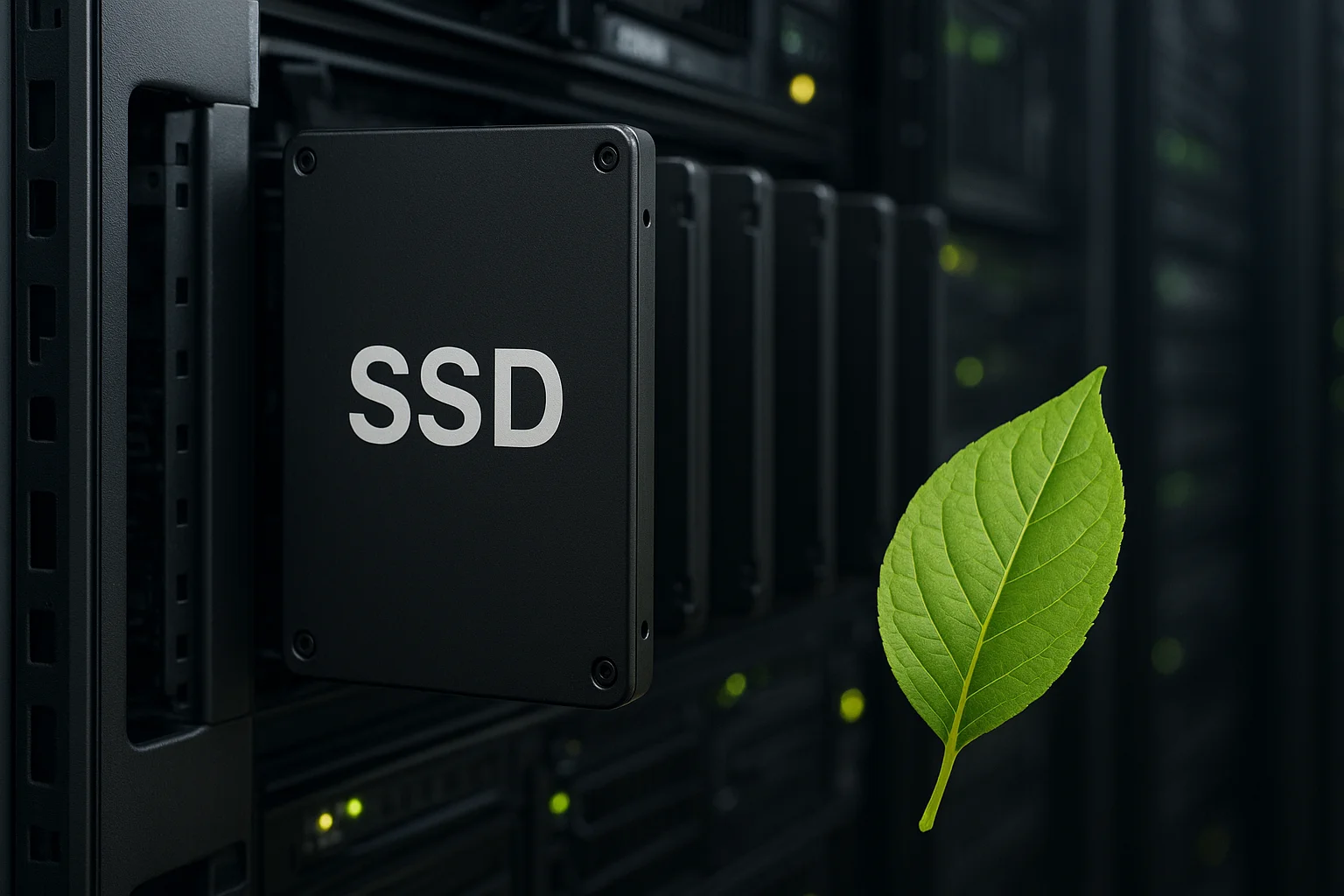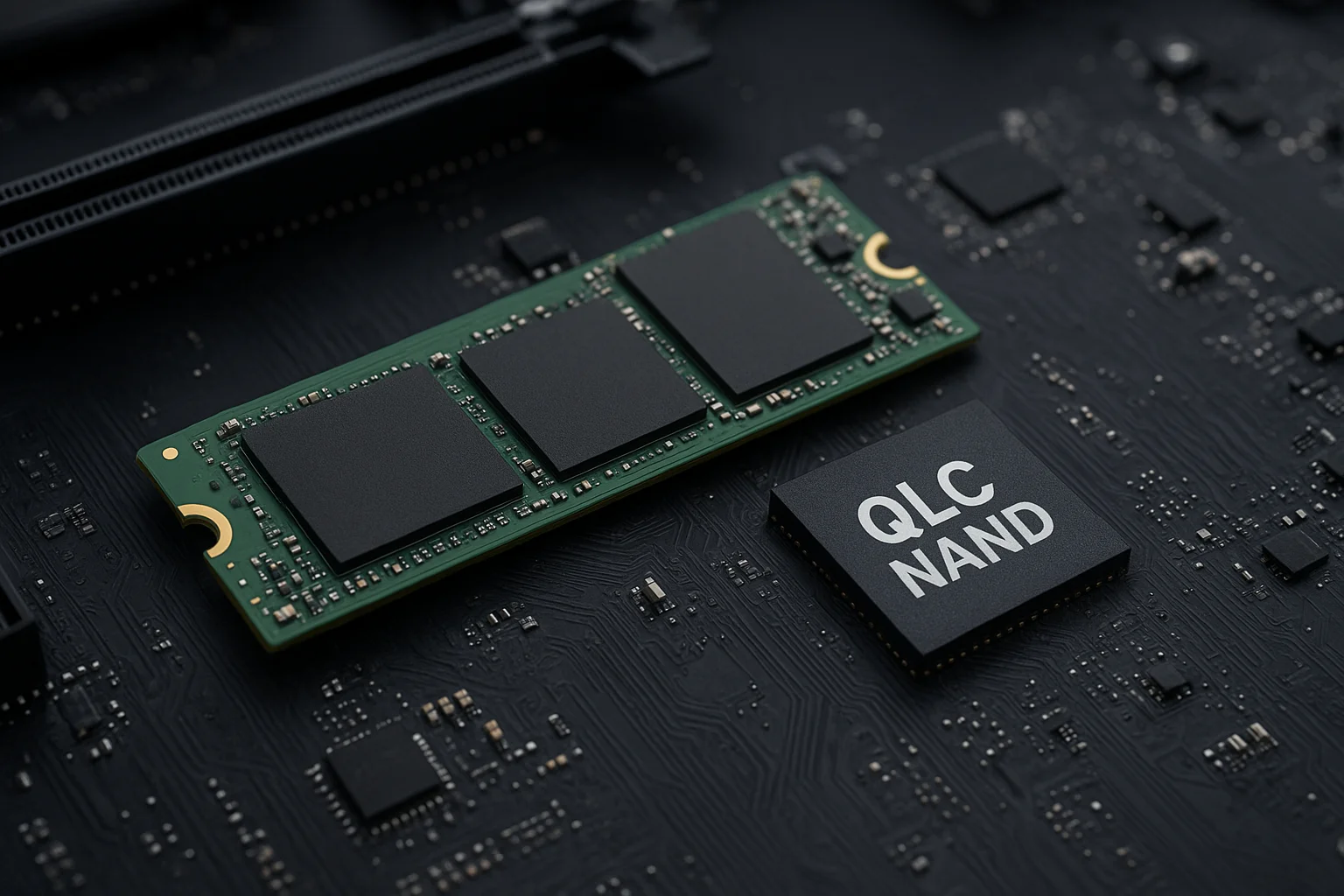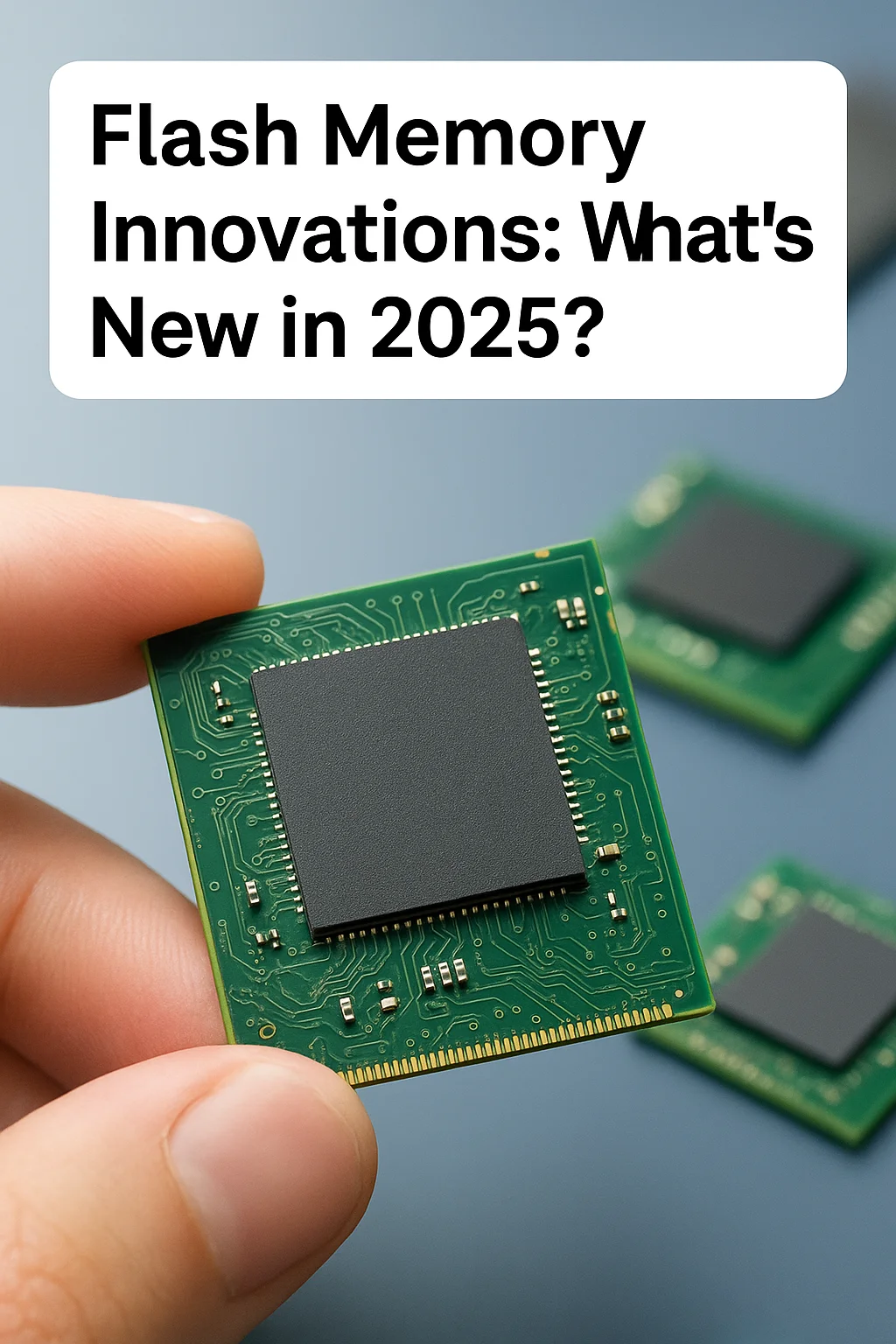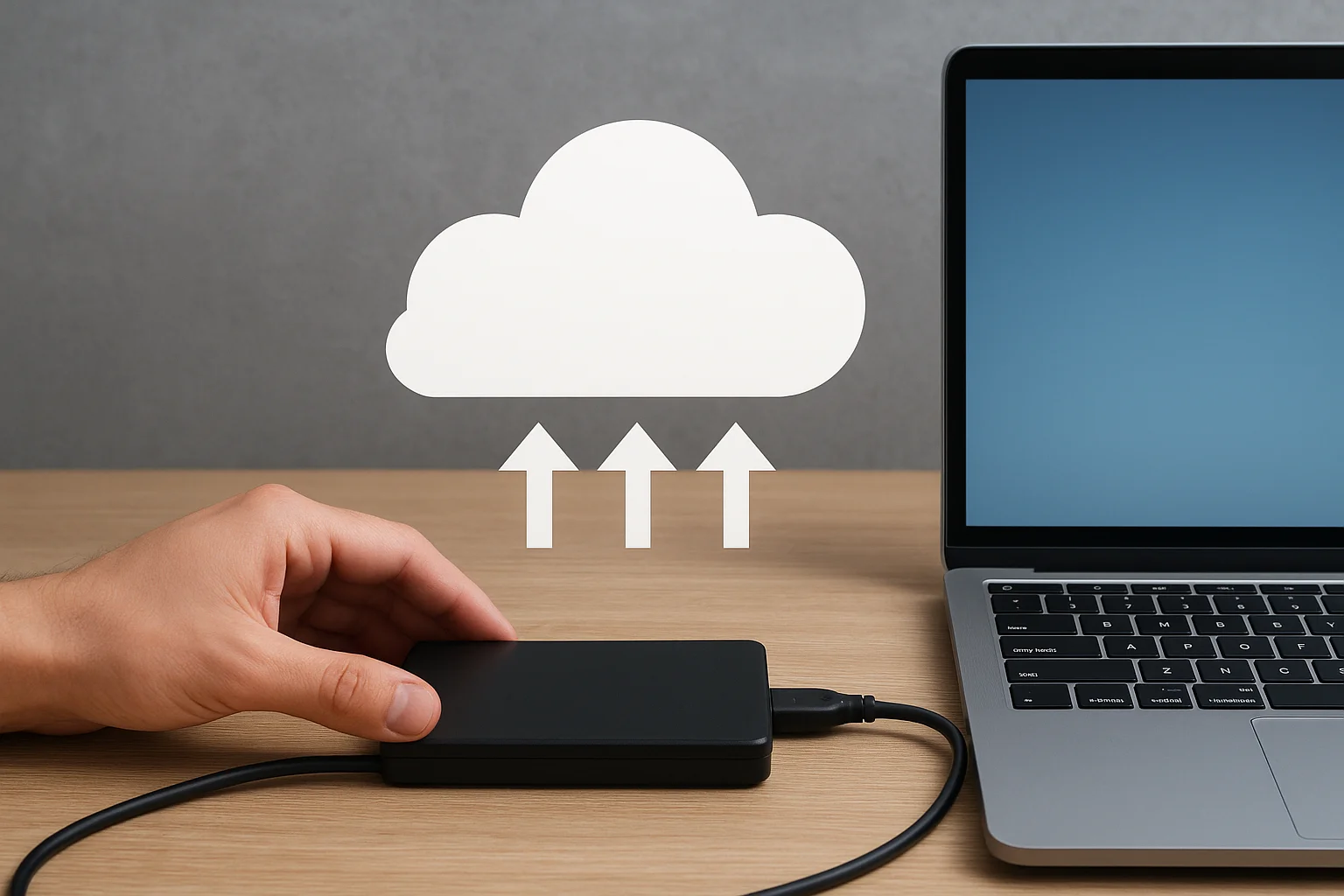The Hidden Energy Problem Inside Modern Data Centers
Data centers are no longer just racks of servers; they are major energy consumers. While compute and networking draw attention, storage is a persistent source of power usage because it runs 24/7, serves many I/O patterns, and influences cooling demand. Traditional spinning hard disk drives (HDDs) consume energy not only while actively reading or writing data, but also while spinning idle. This constant baseline creates a hidden energy tax across large deployments.
Operationally, the energy cost of storage appears in two main places: the storage devices themselves and the ancillary systems they force to run harder, such as cooling and power-distribution infrastructure. In practice, reducing storage energy has an outsized effect because savings compound across:
- server power budgets (less draw per bay)
- cooling load (fewer BTU output means smaller chillers or less runtime)
- UPS and power conversion inefficiencies (less power in equals less loss)
Identifying the storage layer as an energy optimization target is practical because it is both measurable and actionable. Metrics to monitor include per-device watts at idle, average active power during representative workloads, and the impact on room-level cooling. Collecting these will let operators make informed decisions about migration to more energy-efficient SSDs.
How SSD Technology Transforms Power Efficiency
Solid-state drives (SSDs) change the energy equation through fundamentally different mechanics: no spinning platters, fewer moving parts, and much faster I/O completion times. Two practical consequences matter for data centers.
First, SSDs typically deliver equivalent or better throughput using lower average energy per I/O because they finish operations quickly and can enter low-power states sooner. This is not merely a hardware improvement but also an architectural advantage: the same task completes faster, allowing the host CPU and storage controller to idle more often.
Second, SSDs reduce cooling requirements. Because they dissipate less heat for a given workload, rack temperature profiles improve, which reduces fan speed demands and chiller load. This creates cascading savings across the facility.
To visualize differences between HDDs and SSDs for common concerns, the table below summarizes typical characteristics and their practical effects. Values are representative and should be validated against current vendor specifications for procurement decisions.
Table compares typical device characteristics and operational implications.
| Characteristic | Typical HDD Behavior | Typical SSD Behavior |
|---|---|---|
| Idle power | Relatively high - device must spin; tens of watts per drive in some enterprise models | Low - often single-digit watts or sub-1W in NVMe low-power states |
| Active power per I/O | Higher per I/O because of mechanical movement and slower IOPS | Lower per I/O due to fast NAND access and parallelism |
| Heat output | Moderate to high - increases rack cooling requirements | Lower - reduces cooling and fan overhead |
| Latency and throughput | Higher latency, lower random IOPS | Low latency, very high random IOPS |
The Economic Edge: Lower Power, Higher Profit
Energy-efficient SSDs convert technical advantages into clear economic benefits. The most direct line item is lower energy bills, but the total value is wider and often undercounted. Consider these actionable cost areas:
- Operational savings - lower electricity consumption for storage and cooling reduces monthly OPEX.
- Space efficiency - higher density and less rack heat allow more usable compute per rack, lowering facility footprint costs.
- Equipment lifecycle - reduced thermal stress can increase lifespan of nearby components and reduce failure rates, cutting maintenance and replacement expenses.
When evaluating return on investment, compute a realistic total cost of ownership (TCO) that includes not only device price but also energy consumption over its expected life, expected throughput per watt, and any downstream effects on cooling and UPS sizing. Here is a practical checklist to calculate a migration case:
- Measure current per-drive idle and active watts across representative workloads.
- Estimate the same metrics from vendor SSD datasheets and, if possible, test units under your workload.
- Model changes to cooling and power distribution costs using facility PUE (power usage effectiveness).
- Calculate TCO over a reasonable timeframe (3 to 5 years) including maintenance and expected capacity growth.
- Include qualitative benefits such as improved performance SLAs and potential revenue gains from faster services.
Using this approach will turn an abstract "energy-efficient" claim into a concrete financial decision with clear payback expectations.
Green Data Centers and Corporate Sustainability Goals
Adopting energy-efficient SSDs aligns storage infrastructure with broader environmental objectives. Organizations tracking ESG metrics or aiming for carbon reduction targets can count storage efficiency as a direct contribution to Scope 2 emissions reductions when electricity consumption falls.
Beyond emissions, switching to SSDs supports sustainability in several practical ways:
- Faster decommission cycles - smaller racks and less cooling can simplify data center consolidation efforts, reducing the need for new buildouts.
- Measurable KPIs - watts per TB and watts per IOPS are straightforward indicators that can be reported to stakeholders.
- Regulatory alignment - energy efficiency improvements may help meet regional regulations or qualify for green energy incentives.
Operational teams should integrate storage metrics into sustainability dashboards and sustainability teams should request storage-layer reporting when defining targets. Concrete, verifiable storage metrics make it possible to claim and audit emissions reductions.
What’s Next: Innovations Driving the Next Generation of SSDs
Energy-efficient SSDs are not static; the next wave of innovation will further lower energy per operation while improving density and endurance. Important trends to watch and consider for procurement include:
- NVMe and PCIe Gen advancements that increase throughput per watt
- 3D NAND improvements yielding higher capacity per package, reducing power per TB
- Tiered storage controllers that automatically migrate cold data to lower-power flash or idle states
- Firmware and system-level power management tuned for data-center workloads
These innovations mean that migration planning should not be "one and done." Instead, build procurement strategies that:
- Allow phased rollouts starting with hot tiers (high I/O, latency-sensitive) where SSDs deliver immediate performance and energy wins
- Use hybrid approaches for cold archival data until ultra-low-power flash options reach desired cost points
- Plan for firmware/driver updates and vendor roadmap alignment to capture future efficiency gains without wholesale forklift upgrades
Finally, combine technical evaluation with pilot deployments to validate real-world energy and performance figures in your environment. Benchmarks provided by vendors are useful, but the true measure is the device's behavior under your workload mix and operational patterns.
Note: If you want, I can now generate a short checklist / printable summary of the migration steps or a simple table template you can populate with your measured metrics.






